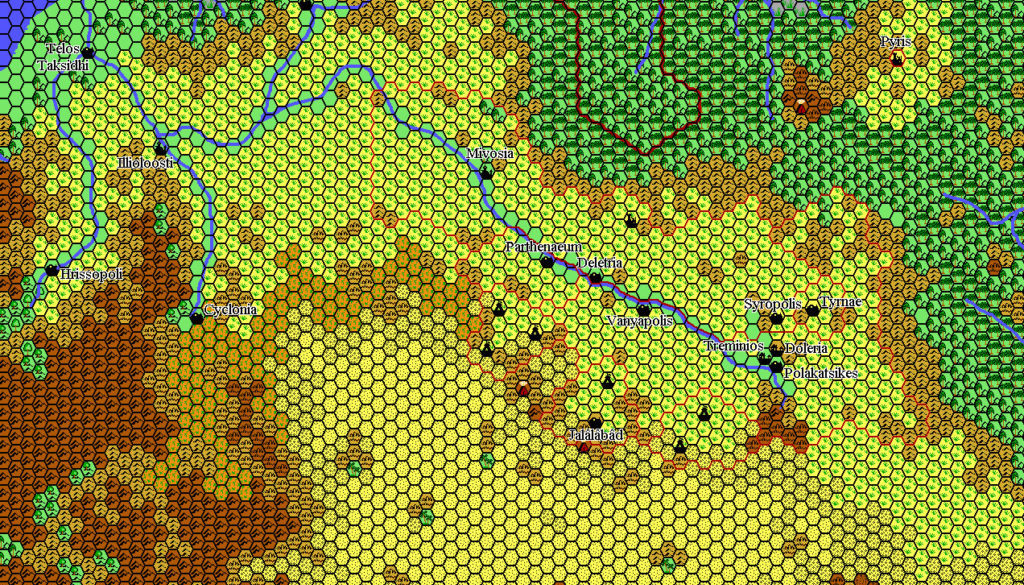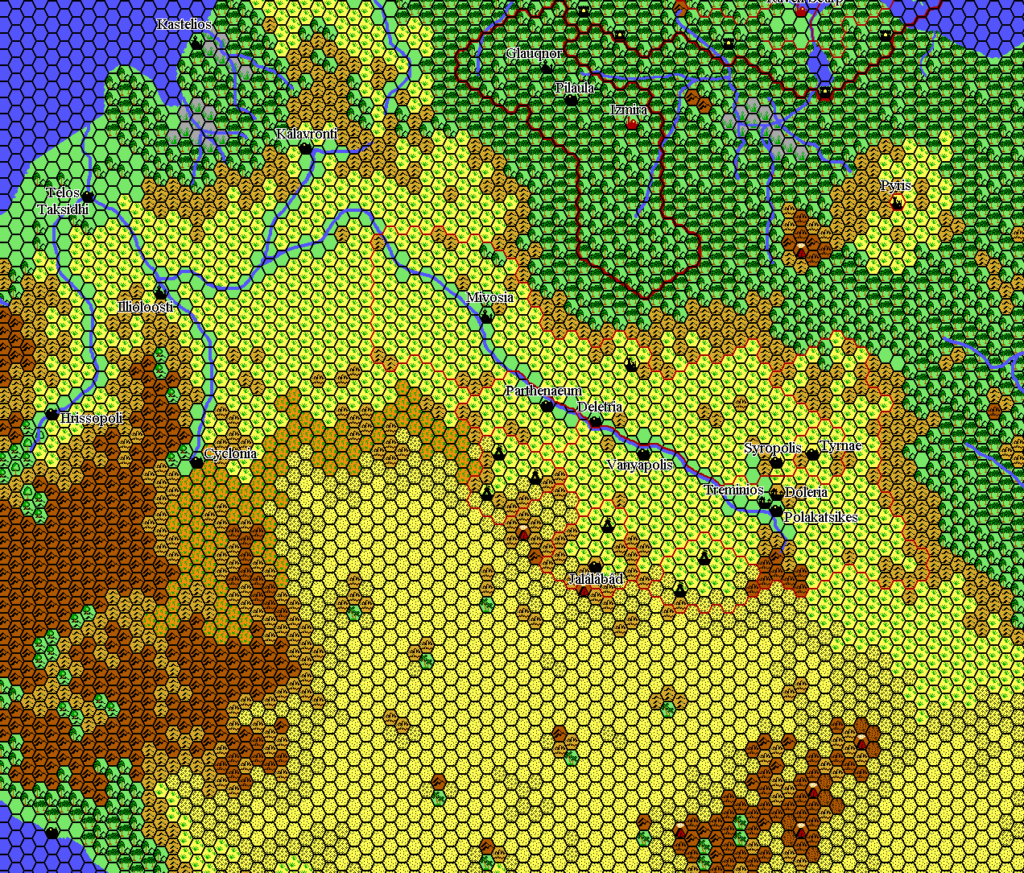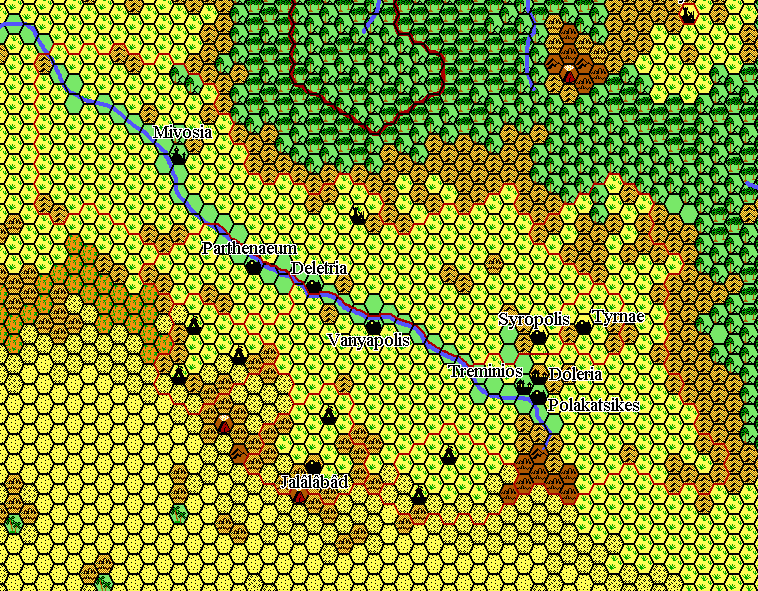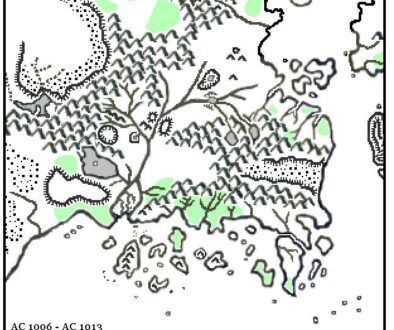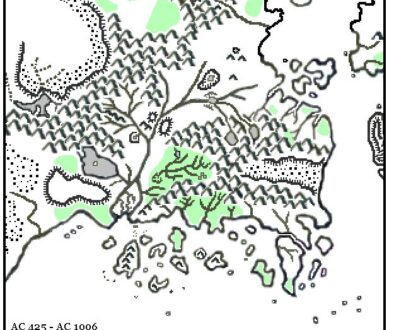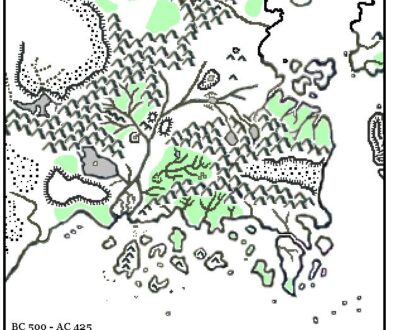Thibault’s Polakatsikes 1019 AC, 24 miles per hex
Thibault continued development of the Mivosia/Polakatsikes area in early 2003, again for the Mystaran Almanac. Although he changed the name of the map from Mivosia to Polakatsikes, it’s undoubtedly the same area. The principal difference is the advance of the timeline from 1018 to 1019 AC, to match the latest Almanac project at the time.
There are two versions of this map: one cropped tightly to the borders of Mivosia and Polakatsikes, the other showing the surrounding area as far as Kastelios to the northwest, Raven Scarp to the north, and an unnamed town southwest on the Adakkian Sound. Both present the area with a few modifications to fit the ongoing storyline of the Almanacs.
These maps were the first steps to his next set of maps, Mivosia and Polakatsikes at 8 miles per hex, which he completed a few days later.
Fan-made Map by Thibault Sarlat (February 2003)
Fan-made Map by Thibault Sarlat (February 2003)
This is an original map created by one of Mystara’s excellent fan cartographers. For more information on the cartographer, including a gallery of all their maps, see also Appendix M: Mappers of Mystara.
Sources
- Poor Wizard’s Almanac II (1993) (PDF at DriveThruRPG)
Fan Sources
- Mystaran Almanac AC 1018 (2002, 2004) (Vaults of Pandius)
- Thibault’s Mivosia 1018 AC, 24 miles per hex (2002)
References
- All of Thibault’s maps at the Atlas of Mystara
- Thibault’s entry in Appendix M: Mappers of Mystara (upcoming)
- Thibault’s author page at the Vaults of Pandius
Chronological Analysis
This is a fan-made map. It was published in 2003. The updated Atlas version of this map is not yet available. See also Appendix C for annual chronological snapshots of the area. For the full context of this map in Mystara’s publication history, see the upcoming Let’s Map Mystara 2003. (Please note that it may be some time before the project reaches this point.)
The following lists are from the Let’s Map Mystara project. Additions are new features, introduced in this map. Revisions are changes to previously-introduced features. Hex Art & Fonts track design elements. Finally, Textual Additions are potential features found in the related text. In most cases, the Atlas adopts these textual additions into updated and chronological maps.
Coming Soon

